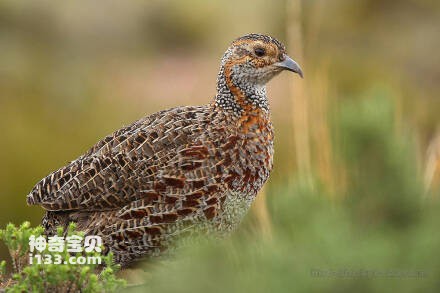
The gray-winged Francolin (Scleroptila afra) has no subspecies.The Partridge is mainly active in the early morning and late afternoon. It feeds on bulbs and roots, especially those of lycoris, sedges and irises, as well as a small number of plant leaves and seeds, insects and invertebrates.Listed on...

The coronal Partridge (scientific name: Rollulus rouloul) Crested Partridge in English, Perdiz Rulrul in Spanish, no subspecies.Coronal partridges tend to live alone or in pairs, sometimes in small groups of up to 15 individuals. Prefers to live in dry areas, descending to the valleys in the early m...
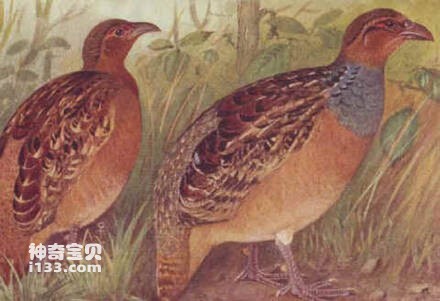
Dulit Partridge, Rhizothera dulitensis, was once a subspecies of partridge. Specific habits are unknown.Listed on the International Union for Conservation of Nature (IUCN) 2016 Red List of Threatened Species ver 3.1 - Vulnerable (VU).Protect wild animals and eliminate wild meat.Maintaining ecologica...
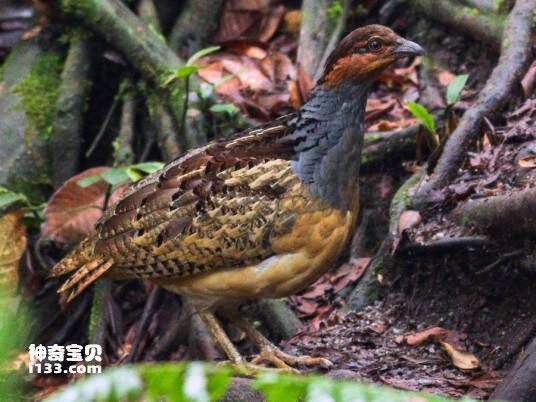
Rhizothera longirostris, or Long-billed Wood Partridge, is seriously threatened by habitat degradation and hunting, and an important conservation priority is rediscovery. Birdlife International believes it may have been in rapid decline due to habitat destruction and degradation, and that its taxono...
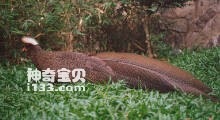
The Crested Argus (Rheinardia ocellata) has two subspecies.The crested pheasant usually moves alone in its territory. They only come together during the breeding season. The species is polygamous in the wild, with males performing elaborate courtship rituals during the mating season, calling and dan...
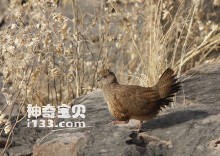
Ptilopachus petrosus usually lives in pairs or small groups of up to four quails and feeds on grass and herb seeds, green leaves, fruits and buds, and some insects.In captivity they are monogamous, but in the wild they are mostly monogamous. The eggs are pale pink, faded to cream, and the whole of t...

Ptilopachus nahani, foreign name Nahan' s Partridge is a traditional bird in the pheasant family. As its other name suggests, it was previously considered a partridge (Francolin) and placed in the genus Francolinus or Pternistis, but it was eventually determined that its closest relative was the...
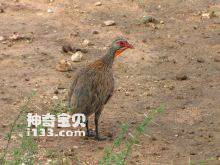
The Grey-breasted Francolin (Pternistis rufopictus) has no subspecies.The partridge is usually solitary, becoming active only in the early morning and late afternoon. It mainly feeds on the tubers of the sedge genus (Sedge family), but also eats small mollusks, termites, ants, and other insects. Whe...
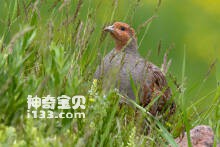
Grey Partridge (Perdix perdix) is known as Grey Partridge and has eight subspecies.Gray partridge usually flocks except during the breeding season. Either a family group or a larger group consisting of a family group. They usually live in groups of 5 to 15 animals. The male quack, ki-errr-ik, ki-err...

Alpine Partridge (Perdix hodgsoniae) is a Tibetan Partridge with four subspecies.Highland partridge is a common resident bird. In addition to the breeding period, it is usually active in groups of 10-15 birds. Up to more than 30, do not like to fly, good at running, running quickly on the ground and...
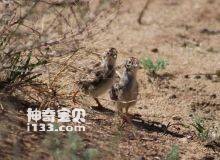
Partridge (Perdix dauurica) is known as Daurian Partridge and has three subspecies.Partridge usually flocks except during the breeding season. Especially in autumn and winter, there are often large groups of 15-25, or even as many as 50 animals. At the end of winter, the population gradually becomes...

The Assamese Bush quail (Perdicula manipurensis) is known as Manipur Bush-quail and has two subspecies. Sing in a clear sound, similar to whistling, as the notes get higher and higher, running together.Listed on the International Union for Conservation of Nature (IUCN) 2016 Red List of Threatened Sp...
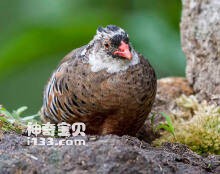
Perdicula erythrorhyncha, also known as Painted Bush-quail, has two subspecies.Red-billed tubs usually gather in groups of 6 to 10 individuals. Move around in open grass or in the grass beside forest roads and driving tracks, eating and sandbathing in the morning and evening. Groups quickly gather a...

The Jungle Bush-quail (Perdicula asiatica) has five subspecies.Tubs usually gather in groups of 6-10 individuals. Move around in open grass or in the grass beside forest roads and driving tracks, eating and sandbathing in the morning and evening. Groups quickly gather around each other by calling an...
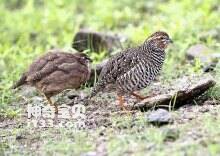
Rock Bush-quail (Perdicula argoondah) has three subspecies. Usually gathers in groups of 6-10 individuals. Move around in open grass or in the grass beside forest roads and driving tracks, eating and sandbathing in the morning and evening. Groups quickly gather around each other by calling and Shout...
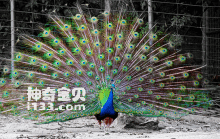
Blue peacock (Pavo cristatus) Common Peafowl, Indian Peafowl, Peafowl, no subspecies.In the wild or domestic, blue peacocks naturally select mates, that is, one male and multiple females (1:3-5), family-style activities, within a certain range of activities, collective feeding and roost, very few in...
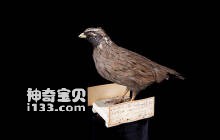
The Himalayan Quail (Ophrysia superciliosa) is a medium sized pheasant bird with no subspecies.Himalayan quails were described in 1846 by John Edward Gray, based on live specimens taken by the Earl of Derby at Knowsley, who was suspicious of their discovery in India. They were not officially found i...
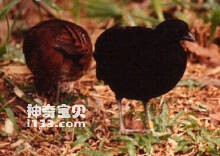
Black quail (Melanoperdix nigra) is known as Black Partridge and has two subspecies.Black quails are omnivorous, and plants include: grains, seeds, roots, tubers, nuts, fruits, berries and leaves. Animals include: arthropods (orthoptera, trichoptera, Lepidoptera, Coleoptera), mollusks, worms.The bre...